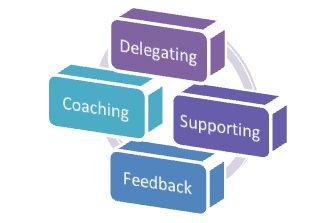Within the business environment humans thrive on meaningful interactions with each other. These meaningful interactions are mostly facilitated in “conversations”.
Uncertainty about about HOW to engage in “better conversations” often prevents business leaders from even trying.
Common questions causing this kind of uncertainty – if I’m going to engage in more conversations:
- what do I talk about?
- how do I get started?
- when do I have more conversations – I’m already busy?
- how often do I need to have these “different” conversations with all the important people in my career, business, team?
- how do I make sure I sound and feel authentic so I don’t become a “vanilla version” of myself?
Tribes had processes for the different conversations that were facilitated – it feels like business people need some tribal “rules” to make it easier for them to initiate and engage in the conversations that are really needed if we are serious about improving relationships.
What is a conversation?
Conversations not only include the sharing of information, ideas and knowledge – people also share skills, attitudes,  emotions and values – consciously or far too often unconsciously. To improve relationships the person who initiates the conversation benefits from taking responsibility for their emotions and attitudes because they leak out in every word and gesture chosen! Importantly, they also improve relationships when they check to ensure the message they meant to send, aligns with the message they actually sent and very critically, aligns with the message the other person actually received. Simple and yet so very complex! Improving communication means reducing the gaps between:
emotions and values – consciously or far too often unconsciously. To improve relationships the person who initiates the conversation benefits from taking responsibility for their emotions and attitudes because they leak out in every word and gesture chosen! Importantly, they also improve relationships when they check to ensure the message they meant to send, aligns with the message they actually sent and very critically, aligns with the message the other person actually received. Simple and yet so very complex! Improving communication means reducing the gaps between:
Identify the important relationships
Start by drawing a “stakeholder” map – put yourself in the centre and then draw lines radiating out with the names of each critical stakeholder – internal (within the business and your team) and external (customers, suppliers, regulators). Use 4 or 5 words to describe the kind of relationship you currently have and then develop clarity on what a “better” relationship might look and feel like for each stakeholder – better:
- Trust
- Honesty
- Respect
- Clarity on expectations of each other
- Conversations
- Accountability
Six conversations for improving communication and improving relationships
Get started by trying all or one of these six conversations. At Courageous Leaders we know these conversations result in improving communication throughout the team, the business and with external stakeholders – this is upward, downward, across and externally – and ultimately results in building better relationships.
Try one or all of these six conversations:
Operational
Use this “frame” to guide your operational conversations both internally and externally. Remember you want a firm GRIP to bring balance between people and task so you achieve the right outcomes, in the right time, to the right level of quality using the “right” behaviours (that align with your brand and culture):
Goals: what we plan to achieve (TASK)
Roles and responsibilities: who is responsible for what (PEOPLE)
Interpersonal relationships: how we work together to bring out our best (PEOPLE)
Process and procedures: how we work (TASK)
Delegation
Challenge yourself to firstly even engage in this conversation by bringing a mindset where you WANT to delegate. When you do be sure to think about the conversation before you get started:
- What outcome do you want/need from the task completion
- Describe the performance guidelines critical to the quality of the outcome
- Explain the resources at their disposal when completing the task
- Determine level of accountability you expect from them in right delivery first time
- Agree on the check-in milestones to ensure outcome is delivered on time and to right level of quality.
Supporting performance
As you engage in the check in conversations about the completion of the task you delegated, take time to engage with the person as a human being who wants to feel significant. Find out how they are feeling and what is standing in their way or enhancing their performance.
Feedback
Be courageous and share feedback – both the positive and the developmental. Try using the ratio of 5:1 – for every one piece of developmental feedback be sure to deliver five pieces of positive feedback. All in separate conversations taking only 10 to 15 minutes. Focus on speed and making it “real” time.
Coaching
Focus on facilitating the other person’s thinking so they find their own solution! We recommend the CLEAR framework to structure your thinking and happily provide more insight if you are interested – start a conversation with us.
Learning Agility
Invest time and energy to engage in reflective thinking conversations to capture the learning. Creating this kind of space to think is essential for improving communication, better relationships, high performance and ensuring your competitive edge in the market place. We recommend using Edward de Bono’s famous six thinking hats framework to provide the necessary discipline and rigour reflective thinking requires to be effective.
Ask us for more information if you are serious about investing in this kind of conversation – we have a one page checklist we can email to you.
Accountability for Action
Each of these conversations result in each participant taking accountability for action – if we are serious about improving relationships and improving communication. Something needs to happen as a result or as time poor individuals we will stop engaging in them – there needs to be benefits and outcomes created.
To explore any of these concepts in more depth so you know how to activate practical results or to find out how we put all of this together into an interactive workshop for your team or business,talk to us today about the Actionable Conversations tool – helping leaders and their teams to have better conversations.









